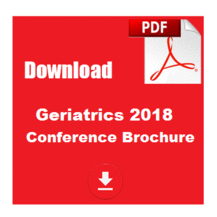
Euler Esteves Ribeiro
Amazonas State University | Brazil
Title: Amazonian rainforest elderly project: Lessons from 10 years study about a pre-Colombian lifestyle ageing
Biography
Biography: Euler Esteves Ribeiro
Abstract
Statement of the Problem: Evidence from last 40 years suggested that increment of some chronic non-transmissible diseases (CNTD) in human populations is associated to lifestyle changes, including overfeeding and sedentarism, in comparison to pre-historical communities. However, there are few World areas that could to be used to investigate aging processes with some
similarities present primitive human populations. Amazon rainforest tropical region could help us understand the human aging. This region consists of 7 million km2 and most of its populations are concentrated in small urban settlements localized along the river and its main tributaries. Due geographic isolation, riparian population (caboclos) have difficulty to access health and social services, and some pre-Colombian lifestyle elements are maintained until now. In this context, from 2007 was started Elderly Rainforest Project (ERP) that investigates gene-environmental variables that acts on aging and CBTD prevalence. Lessons from 10 years ERP results are reviewed and discussed here.
Methods: Crossectional, longitudinal and experimental investigations published of ERP were reviewed and results are synthetized and discussed here.
Results: From an initial comparative analysis between 1802 riparian elderly (Maués-AM) and 1509 urbanized elderly (Manaus-AM) and subsequent studies from 637 riparian subjects was possible to observe, which despite low-income, loweducation and difficulties to health and service access the riparian elderly presented: (1) low CNTDs-prevalence; (2) very good functional fitness and balance; (3) habitual food consumption based in “fish and fruits” and cassava products suggesting existence of a “ pre-Colombian Amazonian diet pattern”; (5) self-report of poor hearing was main variable associated to high riverine mortality, probably due relevance of oral communication in traditional communities. (6) until moment, longevity gene markers were not identified in this population.
Conclusion & Significance: Data from Amazonian riparian elderly people reinforce that diet, physical/social activity are universal elements modulating human survival until late-ages.

